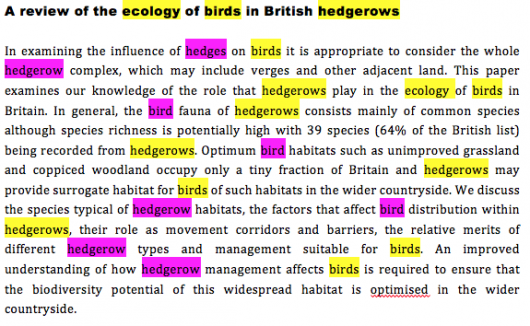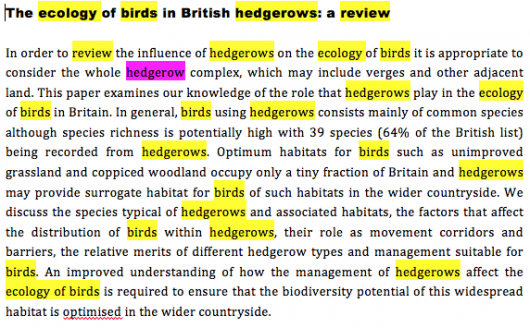 OK, let’s get this out of the way. Search Engine Optimization, or SEO as it is more widely known, is way off your radar. Why would you be interested? It’s for those tech guys who run the website, right? Wrong.
OK, let’s get this out of the way. Search Engine Optimization, or SEO as it is more widely known, is way off your radar. Why would you be interested? It’s for those tech guys who run the website, right? Wrong.
Nowadays everything is online. That probably includes much of your work and certainly all of your published research papers. And ‘online’ means discoverable, connectable and measurable – and it should all be important to you and your work. And it’s certainly of interest to your institute and funders.
Online discoverability
It’s true that you can pretty much post anything online these days and someone will eventually find it. But ‘eventually’ isn’t good enough when it concerns research, and more importantly, your research.
There are ways to make what you put online more discoverable and this is particularly useful when it comes to your published work. Just think about the amount of time it takes to write, submit, get feedback, make corrections and finally have your paper accepted for publication. It takes an age! So, for what could be as little as an extra 10 minutes, working on your title and abstract could pay major dividends for the discoverability of your paper once it is published.
This is where SEO comes in.
At its simplest, SEO in this context is about making your title clear, using key words and phrases, and continuing to use those same key words and phrases throughout your abstract and paper.
You might think that all this is the publisher’s job. Well it is and it isn’t. They can’t do and control everything, particularly at the individual article level, and you can help cover areas they don’t control with relatively little effort.
Around 60% of traffic arriving at Wiley’s journal site (the publishers of the BOU’s journal, IBIS) comes from search engines (mainly Google and Google Scholar). So articles need to be as discoverable as possible to ensure that they appear as high up as possible in any search – what’s the point of being on page 127 when you can be on page 1!
A good author writes their paper and then thinks about the title and abstract once the paper is complete. You will have had a working title, but now’s the time to hone it and link with a carefully crafted and matched abstract – the bit of your paper that everyone reads once they’ve found it.
Search engines are like busy people – they focus on the title and abstract of a paper. So it’s vitally important that you write a clear, accurate title, thinking about the key words and phrases a researcher might use when looking for articles on the same topic. And avoid ambiguous words and terms that in everyday context may mean something different and which could skew search results.
EXAMPLE
Yellow highlight = matches between title and abstract (the more yellow the better)
Pink highlight = mismatches between title and abstract (the less pink the better)
This title and abstract aren’t too bad . . .

. . . but a few minutes spent improving the keyword match and removing mismatches delivers more yellow and less pink highlights and so delivers better optimization and discoverability:

Here are a few simple tips to help you optimize your paper:
- Prepare a list of relevant key words and phrases
- Lead with these key words and phrases in the title
- Repeat these key words and phrases as often as possible throughout the abstract
- Repeat key words and phrases throughout the paper – the more the better
- Use key words and phrases in headings within the article
- Include at least five keywords in the keyword field
- Include links to relevant articles, social media items, your own work, your online profile, etc.
Online connectivity
You should also make good use of connecting to as many relevant online sources as possible. Reference online papers more and link to your other published work on the subject. Also, include links to social media accounts and content and even your online profile – this will all allow other researchers to find you more easily online.
You can also help to promote your paper via social media and blogs. Search engines love blogs and a blog article can appear higher up in a Google search than the paper it covers. Blogs and social media content linking to your paper also count to your individual article metrics. Which leads us neatly on to . . .
Online measurability – individual article metrics
All this online discoverability and connectivity can be measured and individual article metrics have recently arrived for many journals and will be the norm in coming years. These metrics will allow you and others to measure the impact of your published work, including your institute and funders.
So, if you do nothing else today, go back to the last draft of that paper you have just submitted and start reworking the title and abstract to ensure it is going to work hard for you!
Further reading
Making social media and the web work for you | #theBOUblog
The benefits of blogging about your research | #theBOUblog
What is Altmetric? | #theBOUblog
About Altmetric and the Altmetric score | altmetric.com
Altmetric is now on board for all Wiley journals | Wiley Exchanges
Making life easier for researchers | A Q&A with Altmetric’s Amy Brand
More social media content from the BOU



